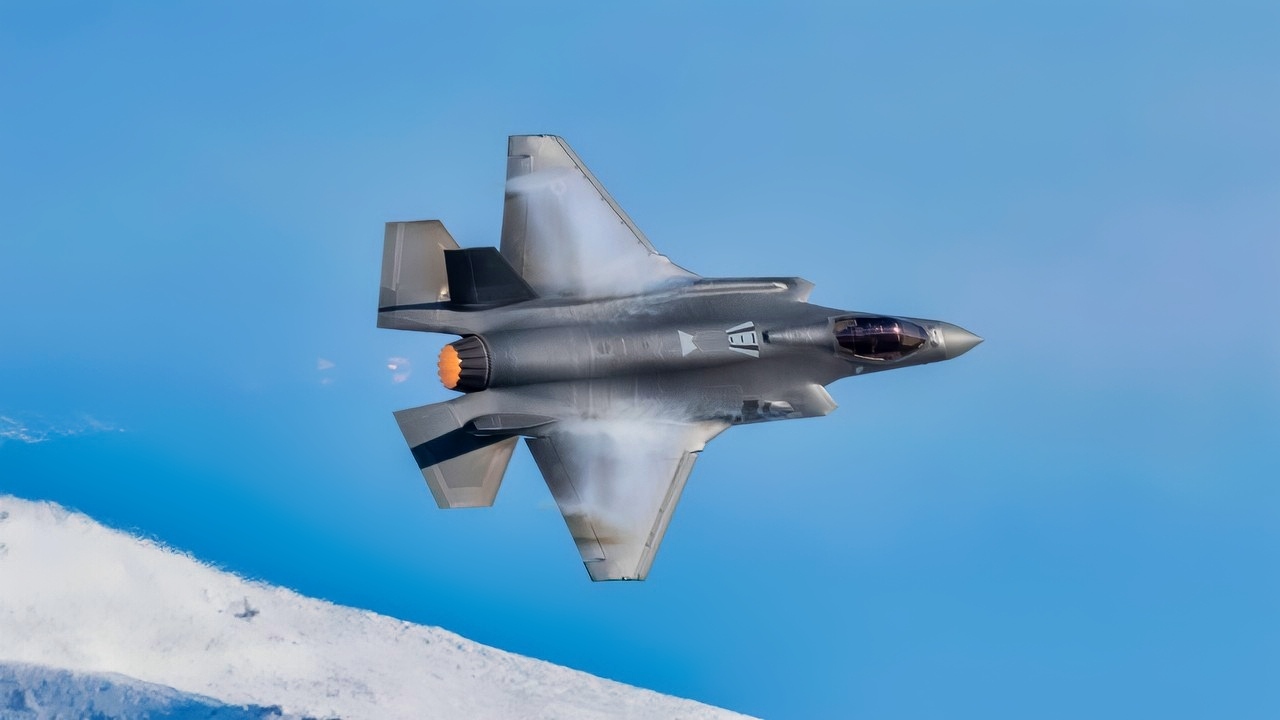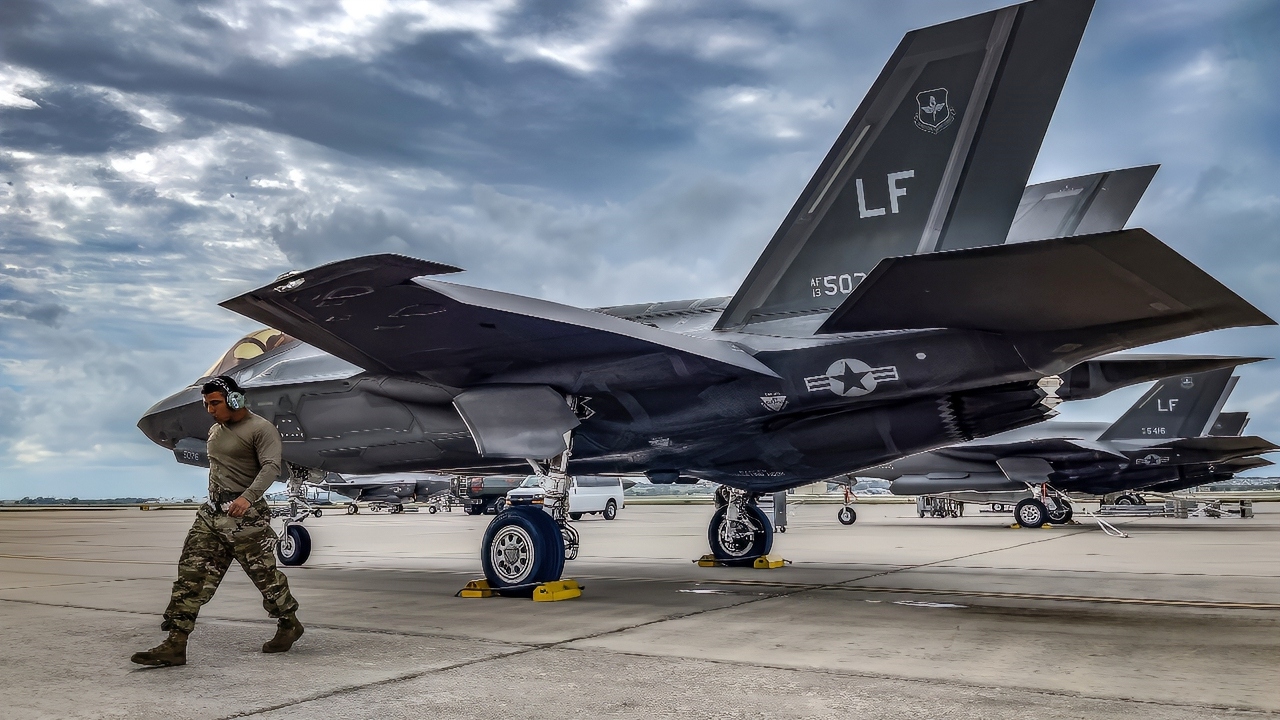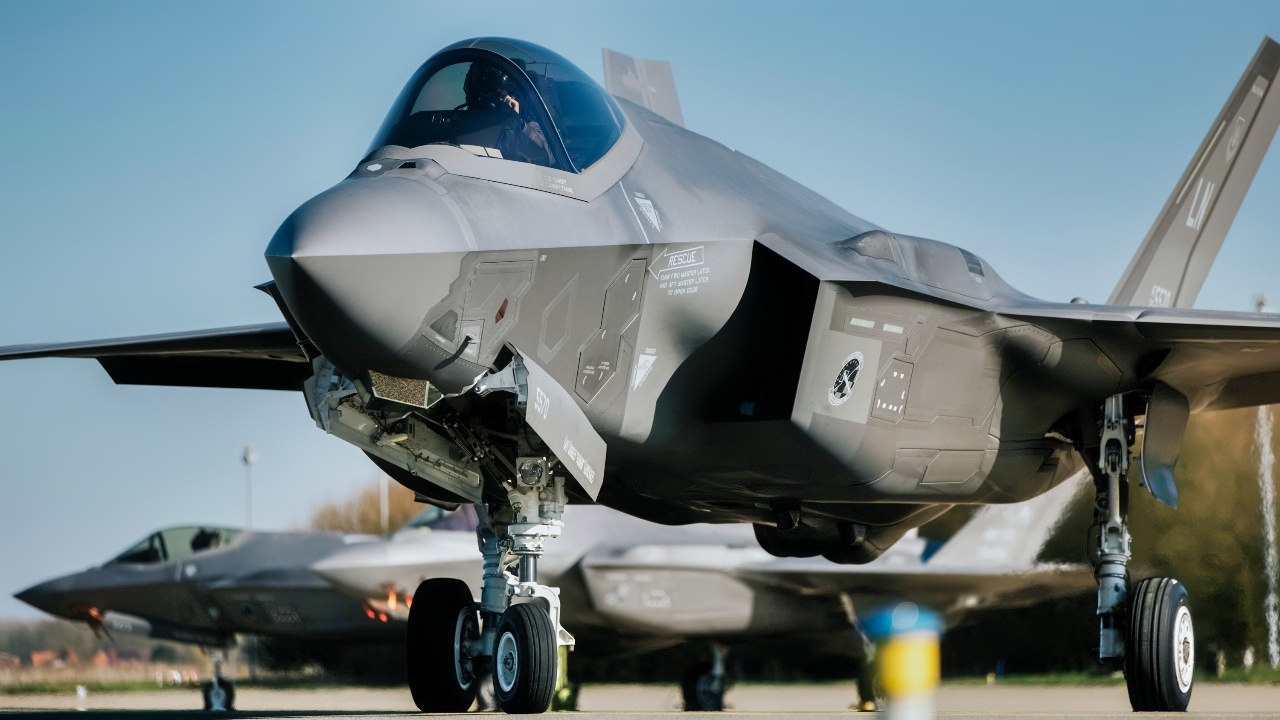Key Points and Summary – A stunning new Government Accountability Office (GAO) report reveals that 100% of the F-35 fighter jets delivered by Lockheed Martin in 2024 were late.
-The 110 aircraft were delayed by an average of 238 days, a massive jump from 2023.
-The GAO identifies the troubled Technology Refresh 3 (TR-3) hardware upgrade as the primary cause.
-In its scathing conclusion, the watchdog stated the F-35 program continues to “overpromise and underdeliver” and criticized the Pentagon for rewarding contractors with incentive fees even for late deliveries, a practice it recommends ending.
More F-35 Fighter Problems
How many of the deliveries of F-35 jets from Lockheed Martin were late in 2024?
All of them, it turns out.
That’s the conclusion of a report released this week by the Government Accountability Office, titled “F-35 JOINT STRIKE FIGHTER Actions Needed to Address Late Deliveries and Improve Future Development.”
The report was detailed by Task and Purpose. The 54-page report was addressed to multiple Congressional committees.
According to GAO, “in 2024, Lockheed delivered 110 aircraft. All were late by an average of 238 days, up from 61 days in 2023.”
The report came about, GAO said, because Congress passed a statute to “review the F-35 program.”
Why the Stealth Fighter Jets Were Late
The Pentagon, the GAO report said, “is in the process of establishing a new major subprogram to help meet cost, schedule, and performance goals,” after what it calls “years of cost growth and schedule delays in its hardware and software modernization effort.”
That modernization effort, known as Block 4, has led to both rising costs and delays, leading the Pentagon to reduce the scope of that effort.
The main reason for the delays, per the GAO report, was Lockheed’s Technology Refresh 3 (TR-3), which GAO calls “the primary driver of late aircraft deliveries in 2024.”
The program has included incentive fees to ensure that the planes were delivered on time. However, contractors have been allowed to provide the aircraft up to 60 days late and still receive some of the fee. It’s a practice that the GAO recommends be ceased.

A U.S. Air Force F-35A Lightning ll assigned to the 388th Fighter Wing, Hill Air Force Base, Utah, sits in a hangar at Lakeland Linder International Airport, Lakeland, Fla., following a aerobatic routine by the F-35A Lightning ll demonstration team at the Sun ‘n Fun Holiday Flying Festival, Dec. 4, 2020. The Lightning II is a stealth-capable, multi-role attack fighter designed to penetrate the most hostile areas of the world without the threat of detection. (U.S. Air Force photo by Staff Sgt. Codie Trimble)

Maj. Kristin “BEO” Wolfe demonstrates the capabilities of the F-35A Lighting II, a single seat, single engine, all-weather stealth multirole fighter aircraft, during a practice flight with the F-35 Demonstration Team at Hill Air Force Base, Utah, Dec. 13, 2023. (U.S. Air Force photo by Senior Airman Jack Rodgers)
The letter from GAO states that it has made 53 recommendations to improve the F-35 program since 2001, and in that time, “DOD has taken action to address more than half of our recommendations, leading to improvements such as increased focus on reliability and maintainability efforts.”
The Conclusions
The GAO report offered conclusions, as well as recommendations.
“After nearly 20 years of aircraft production… the F-35 program continues to overpromise and underdeliver,” the watchdog said in its conclusion section. “In addition, the F-35 contractors continue to have challenges with fully meeting contract requirements and the program rewards them for it.”
Once the media reported on the GAO assessment, Lockheed replied.
“The F-35 is combat-proven, offers the most advanced capability and technology, and is the most affordable option to ensure America and its allies remain ahead of emerging threats,” Lockheed Martin said in a statement to several media outlets, including Defense News.
“In partnership with the F-35 Joint Program Office, we will deliver 170 [to] 190 F-35s this year and continue fielding Block 4 capabilities to ensure the F-35 maintains its unmatched dominance in the skies.”
Per Task and Purpose, the Air Force, Marines and Navy all have parts of the fleet- “The Air Force took delivery in April of its 500th F-35, the Marines own about 250, and the Navy has over 100.”
GAO’s Recommendations
The GAO, in its report, issued six recommendations, all of them for actions that should be taken by the Under Secretary of Defense for Acquisition and Sustainment. Michael P. Duffey, a Pentagon veteran, has been in that position since early June.
The under secretary, per the report, should “ensure that the F-35 program office evaluates the production capacity of Lockheed Martin to meet the planned delivery quantities on time and adjust the future schedule to better ensure production and sustainment demands can be met,” while also establishing “a comprehensive mechanism containing quality information to track information about F-35 engine and aircraft MVRs.”

U.S. Air Force service members from the 62nd Fighter Squadron, Luke Air Force Base, Ariz., conduct flight line operations in support of the F-35 Lightning II TDY, Oct. 28, 2021, at Joint Base San Antonio-Kelly Field, Texas. The 62nd FS will be training with F-16s from the 149th Fighter Wing and the 301st Fighter Wing, along with T-38s from the 301st Fighter Wing. The multi-role capabilities of the F-35 allows them to perform missions which traditionally required numerous specialized aircraft. The complimentary air superiority capabilities of the F-35 will augment our air superiority fleet and ensure we continue to “own the skies” over future battlefields. (U.S. Air Force photo by Brian G. Rhodes)
The report also recommends that the Pentagon reevaluate those incentive fees, that it select an “Adaptive Acquisition Framework pathway for the EPM major subprogram,” and that the F-35 subprograms “expand the use of the leading practices for product development, such as developing a minimum viable product, pursuing digital twins that can be used to inform development, and updating modeling and simulation tools in real time.”
The Pentagon, GAO said, “concurred with four of our six recommendations and partially concurred with two recommendations.”
About the Author: Stephen Silver
Stephen Silver is an award-winning journalist, essayist, and film critic, and contributor to the Philadelphia Inquirer, the Jewish Telegraphic Agency, Broad Street Review, and Splice Today. The co-founder of the Philadelphia Film Critics Circle, Stephen lives in suburban Philadelphia with his wife and two sons. For over a decade, Stephen has authored thousands of articles that focus on politics, national security, technology, and the economy. Follow him on X (formerly Twitter) at @StephenSilver, and subscribe to his Substack newsletter.
More Military
The M10 Booker Light Tank Is Dead
SR-72 Darkstar Might Never Fly
The U.S. Navy’s ‘Achilles Heel’: China’s Underwater Drones










